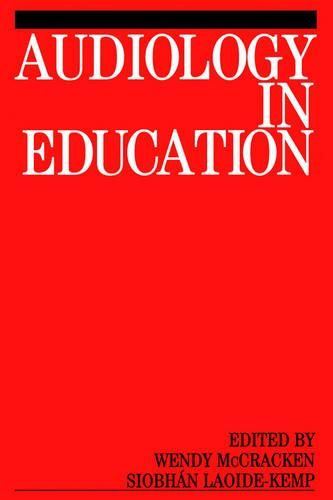Readings Newsletter
Become a Readings Member to make your shopping experience even easier.
Sign in or sign up for free!
You’re not far away from qualifying for FREE standard shipping within Australia
You’ve qualified for FREE standard shipping within Australia
The cart is loading…






This book provides a resource for all professionals involved with the educational management of deaf children. It provides a research base in educational audiology and demonstrates the practical applications of this knowledge for teachers working with deaf children. Section 1 provides introductory chapters covering the impact of a diagnosis of deafness on the family, and the need for the teacher to be able to interpret and explain that audiological test results and other information imparted to the family within a clinical setting. The particular role of the teacher in the context of children who have special learning needs is also discussed. In section 2 the continually evolving options in communication aids available to deaf children are examined in detail. These chapters highlight the role of the teacher in assessing the child’s changing needs and being aware of the advantages and problems of the various devices available. Having established a clear understanding of the implications of audiology as it relates to the deaf child and its environment, in section 3 the authors look at ways of achieving the optimum development of listening, language and learning skills in deaf children. They stress the importance of continual assessment and evaluation, the establishment of programmes tailored to the needs of each individual child - in whatever educational setting they may be, and the necessity for positive interaction between the various professionals involved and between the professionals and the family of the child concerned.
$9.00 standard shipping within Australia
FREE standard shipping within Australia for orders over $100.00
Express & International shipping calculated at checkout
This book provides a resource for all professionals involved with the educational management of deaf children. It provides a research base in educational audiology and demonstrates the practical applications of this knowledge for teachers working with deaf children. Section 1 provides introductory chapters covering the impact of a diagnosis of deafness on the family, and the need for the teacher to be able to interpret and explain that audiological test results and other information imparted to the family within a clinical setting. The particular role of the teacher in the context of children who have special learning needs is also discussed. In section 2 the continually evolving options in communication aids available to deaf children are examined in detail. These chapters highlight the role of the teacher in assessing the child’s changing needs and being aware of the advantages and problems of the various devices available. Having established a clear understanding of the implications of audiology as it relates to the deaf child and its environment, in section 3 the authors look at ways of achieving the optimum development of listening, language and learning skills in deaf children. They stress the importance of continual assessment and evaluation, the establishment of programmes tailored to the needs of each individual child - in whatever educational setting they may be, and the necessity for positive interaction between the various professionals involved and between the professionals and the family of the child concerned.